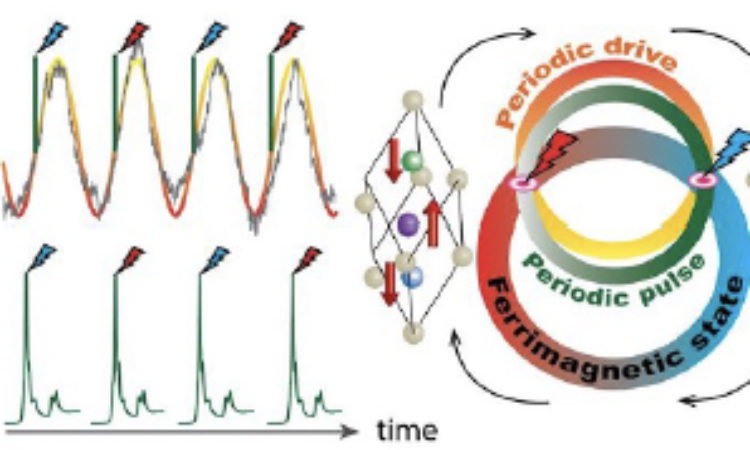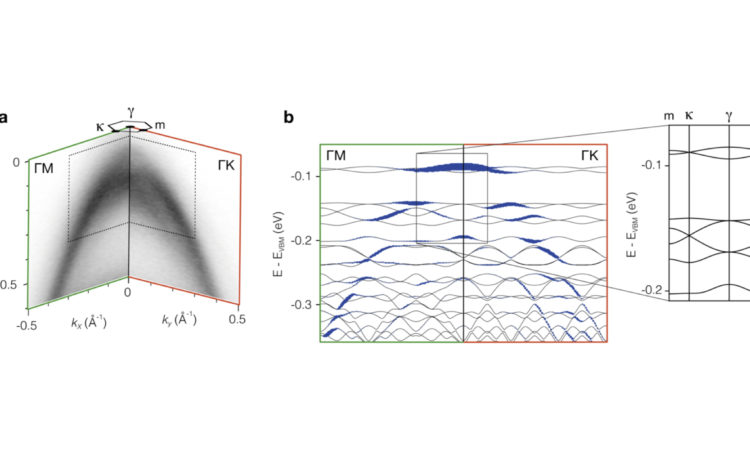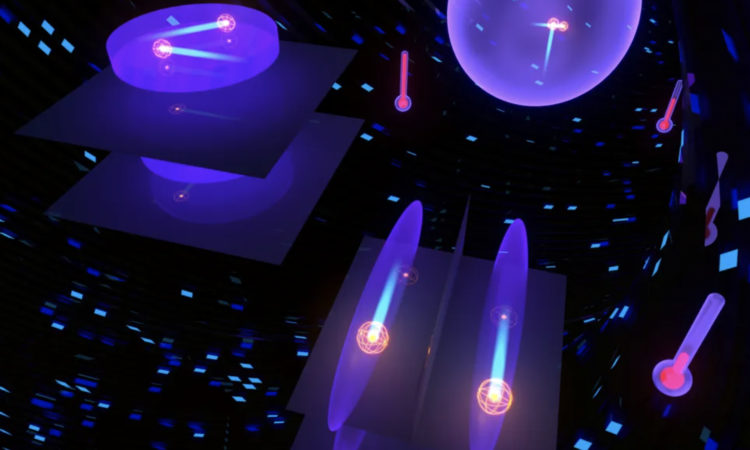A self-oscillating Thouless pump emerging from long-range interactions and dissipation

By Tobias Donner and Tilman Esslinger, ETH Zurich
In our recent work we demonstrated how cold atoms are pumped through a synthetic crystal without having to apply an external periodic driving [1]. The mechanism has a topological origin and combines key aspects of quantum many-body physics in unexpected ways, thus paving a novel path to understanding and creating exotic steady-states of quantum matter.
Pumps are transport mechanisms in which direct currents result from a cyclic evolution of the potential. Models for geometrical pumps in lattices show singularities in their parameter space, which lead to pumping as soon as these are encircled, with the transported charge proportional to the winding number. The pumping process can have topological origins, when considering the motion of quantum particles in spatially and temporally periodic potentials. For filled bands the current is quantized in this number and topologically protected, as recognized by Thouless [2]. However, the periodic evolution that drives these pumps has always been assumed to be imparted from outside, as was the case in the experimental systems studied so far. We have discovered an emergent mechanism for pumping in a quantum gas coupled to an optical resonator, where we observe a particle current without applying a periodic drive. The long-range pumping potential experienced by the atoms is formed by the self-consistent cavity field interfering with the static laser field driving the atoms. Due to the dissipative coupling of the cavity mode to vacuum fluctuations, the cavity field cycles between its two quadratures. The atom-light interaction gives rise to a dynamic bipartite lattice composed of a moving part that has half the spatial period of the underlying static part. The dynamic evolution of the cavity field thus leads to a cyclic deformation of the total lattice potential between two topologically distinct centrosymmetric crystal configurations. This self-oscillation results in a time-periodic potential analogous to that describing the transport of electrons in the paradigmatic Rice-Mele pump. In the experiment, we directly follow the evolution of the matter-light system by measuring the phase winding of the cavity field with respect to the driving field, see figure, and observing the atomic motion in-situ. The discovered mechanism combines the dynamics of topological and open systems, and features characteristics of continuous dissipative time crystals.

[1] Dreon D, Baumgärtner A, Li X, Hertlein S, Esslinger T & Donner T: Self-oscillating pump in a topological dissipative atom–cavity system. Nature 608, 494–498 (2022).
[2] Thouless, D. Quantization of particle transport. Physical Review B 27, 6083 (1983).



